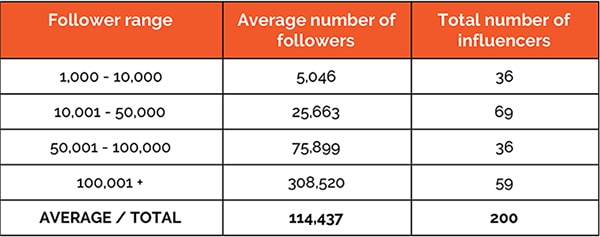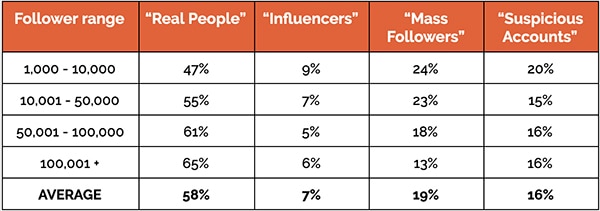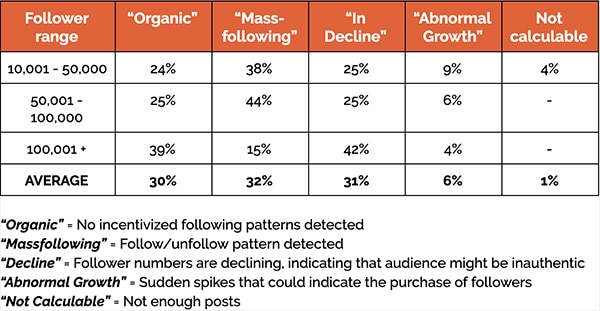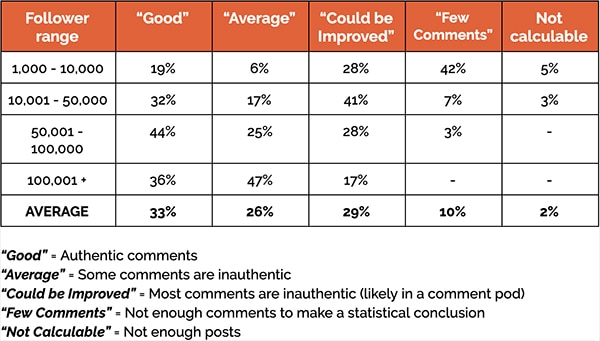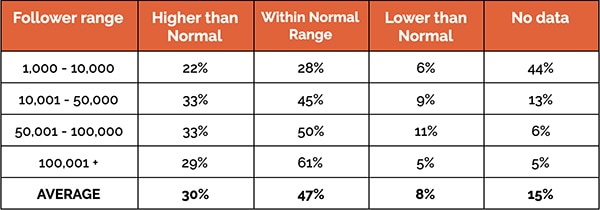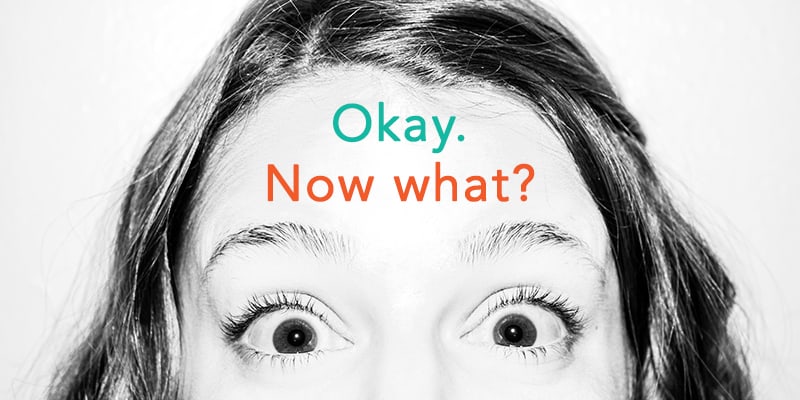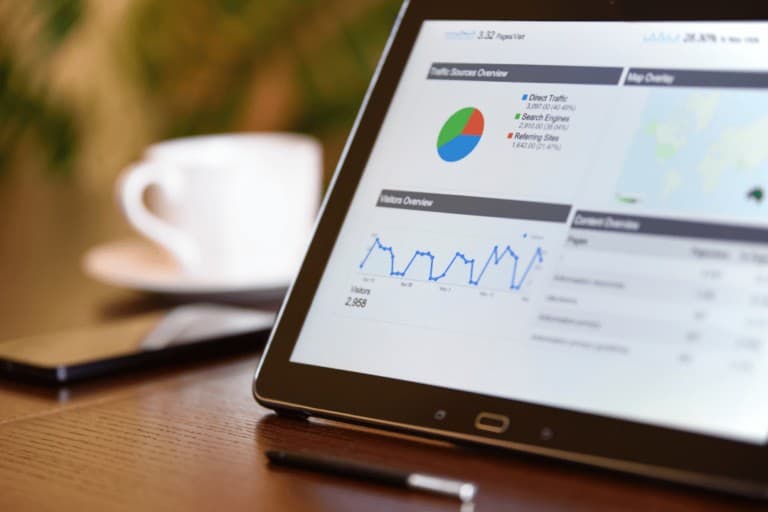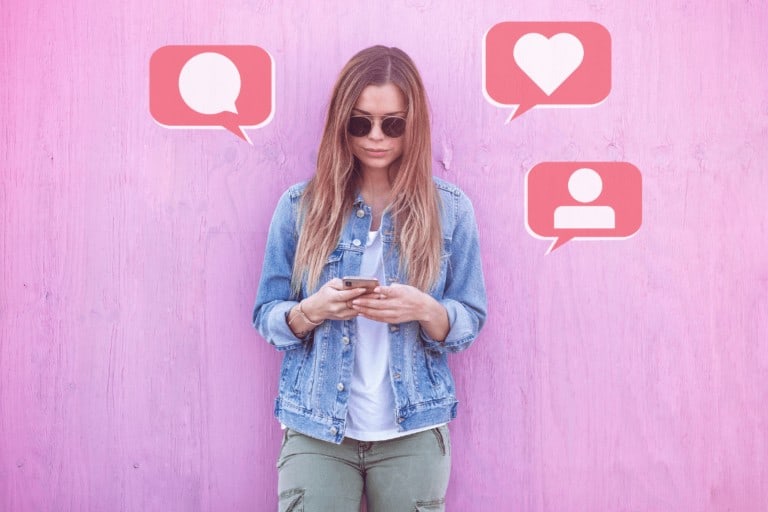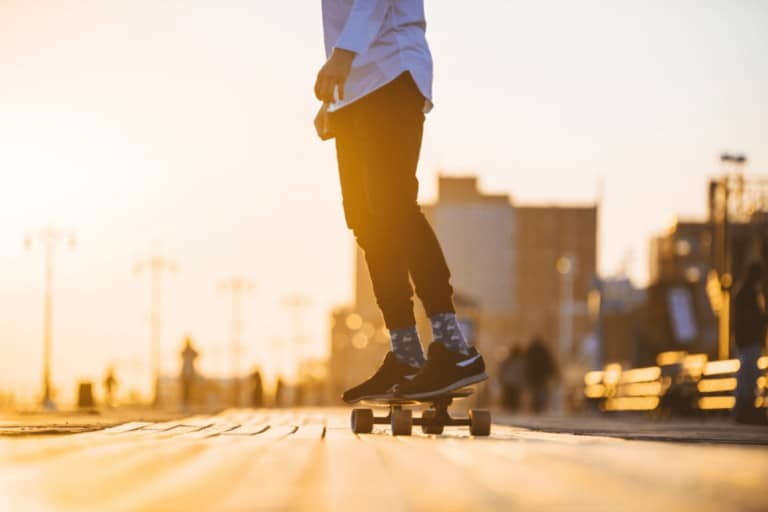The Truth About Influence on Instagram
by Dalene Heck, Stephanie Yoder, and Sophie Schneider
Instagram as an engine of influencer marketing is a huge and growing industry. Everywhere you look Instagram “celebrities” are amassing enormous followings and commanding hefty prices from brand partnerships.
It’s estimated that more than 6.5 billion dollars will be poured into influencer marketing in 2019, which is more than twice the figure from 2017. As the fastest growing social network (quickly on its way to reaching 2 billion users), Instagram influencers stand to benefit the most from this influx of cash. In fact, 79% of influencer marketing professionals consider Instagram the most important platform for marketing campaigns.
That said, there are still plenty of reasons for brands to be wary of Instagram influencers. While there are many hardworking professionals who bring great value to the table, there are just as many (if not more) charlatans who are cheating the system for their own gain.
Back in 2016, we wrote another post about how Instagrammers try to game the system by creating fake Instagram engagement using bots. Nearly three years later we’ve returned to take another look, and this time with a rigorous tool to back us up.
Of the 200 influencers we studied, 65% of them are currently engaging in shady behaviour to boost their Instagram following and/or engagement.
We strongly believe in the power of good, organically built Instagram audiences, but the evidence we uncovered is even more reason why it’s essential to dig deep when vetting potential partners for projects. Picking an influencer to work with goes much deeper than just checking their follower count.
How Influencers Manipulate Data on Instagram
Organic growth is a painstakingly long game, and there are a lot of shortcuts influencers can take to cheat the system. Some influencers, in an effort to legitimize their actions, state that these manipulation tactics are necessary because the current Instagram algorithm limits organic reach so severely. The tactics they use range from somewhat annoying to outright fraud, and no matter the reason for employing them, most are against Instagram’s terms of service and could put an influencer at risk for being banned.
Here are common influencer manipulation schemes, in order from least to most terrible.
The Follow/Unfollow Trick
Plenty of would-be influencers pick up this idea when they are just starting out. It’s very easy and cheap to install programs that allow you to mass follow other Instagram accounts. The idea is that other people will be incentivized to reciprocate and follow you back. Later, the program goes back and unfollows any accounts who did not follow back. This is a quick way to inflate your follower count without blowing out your follower/following ratio.
It seems fairly innocent, but follow/unfollow is actually against Instagram’s terms of service, it’s annoying and it’s pretty easy to spot with the right analytics. It may help boost follower counts, but it doesn’t do much towards building an engaged audience. As with most things in life, quality of followers is more important than quantity.
Engagement Pods
Instagram pods are formed by groups of Instagram users that commit to engaging with each other’s content in order to increase impressions and engagement. They often gather and organize in private Facebook groups, Telegram chats, or on Whatsapp. Every time that a member publishes a post they share it with the group. Everyone in the pod then visits the post, likes it, and comments. The idea is that a burst of activity will help the post shoot to the top of Instagram’s algorithmic feed and then boost more natural engagement.
People are conflicted over the ethics of pods, but most come down on the side of them being manipulative and unethical. Incentivized likes and engagement aren’t representative of true follower interest and engagement. They are misleading to potential sponsors.
Automating Likes and Comments
Similar to using an automation service to follow and unfollow accounts, it is also possible to hire a program to like and comment on other photos “as” the influencer’s account. The influencer sets some specific parameters, like asking the bot to post the comment “Wow! Great shot!” on all photos that use the hashtag #travelblogger. The expectation is that other people who see that comment may click through to the influencer’s account and eventually like their account too.
Thus, the influencer’s comments and account are basically spammed all over Instagram in an attempt to widen their own exposure. All of these fake likes and comments also means that the influencers on the receiving end of them may report higher engagement levels than they truly have.
Using such bot services are against Instagram’s terms of service. In 2017, Instagram famously shut down one of the more popular services called Instagress, only to have many others pop up in its place.
Buying Fans
Buying Instagram followers is the quickest way to go from being a social media nobody to a somebody (if by somebody you mean someone with a lot of fake followers). Lots of major celebrities have been caught with fake Twitter followers, but the practice persists, and it’s a major problem on Instagram too.
Buying followers is incredibly easy – the influencer pays a service anywhere from $10-$1,000 for hundreds of likes, and simply watches their follower count tick up.
The problems with this are probably obvious: a giant audience of fake accounts and bots is a hollow victory. They aren’t real fans and they certainly don’t care about anything the “influencer” has to say. Sponsors who don’t do their homework can easily be misled into paying lots of money to advertise to essentially nobody at all.
Buying Likes and Comments
Beyond buying fans, influencers will also purchase likes and comments from companies online as part of an engagement scam. Why? Because the problem with buying lots of fake fans is that it actually makes your rate of engagement tank. Influencers can combat this by spending even more money to buy fake likes and comments. Bots can easily like hundreds of posts an hour (provided by something like this “click farm”), boosting engagement rates quickly and making your account look busy and popular.
These companies can also use either real people or scripts to churn out reels of fake comments. You can usually spot these comments easily as they are short, vague, and often riddled with misspellings. They are essentially fraudulent engagement or the Instagram equivalent to paying people to show up at your birthday party. You look popular, but you’re actually really sad and alone.
The Use of These Tactics is Common, and Here’s the Proof
For the last month, we have been poring over the data provided by our large HypeAuditor download of 200 North American Instagram influencers (all of whom focused primarily on the travel industry). We have run the numbers for our own accounts and asked our most trusted influencer friends to review their reports and provide comments.
The results: Some of them surprised us, and others were sadly true to our expectations.
Many, many Instagrammers are manipulating their numbers. But before we get into who is doing it, and how, we need to share a few establishing facts about our research.
- The breakdown of the influencers we reviewed looks like this:
Of the above, we would categorize 30% of them as Instagrammers-only, and the remaining 70% as those who are primarily bloggers who use Instagram as a supplementary platform to share their content.
- Throughout this post, we have included snapshots of our @HeckticTravels HypeAuditor analysis as context. A few details about the @HeckticTravels account: it has been active since 2012 and is currently at 29,200 followers. We have never purchased fans, participated in any comment pods, or done any follow/unfollow.
- About HypeAuditor itself: It is important to note that many of their report findings are not definitive. Instead, they phrase their findings as an influencer is likely to have participated in comment pods based on the patterns established in that influencer’s data. But by using our own accounts as benchmarks, and by talking to several other influencers about their reports, we are confident that the findings and assumptions are mostly accurate. Certain data on the system is updated daily, and trends and behavioral patterns are recalculated every 30 days. We downloaded all of the reports for this study in mid-April of this year (with the exception of @HeckticTravels, which we acquired a few months earlier).
Analysis: The Audience
Some of the numbers we present below look pretty bad. Believe us, we share your disgust.
But before we get to that, it is important to remember one thing: it is inevitable that even the purest Instagram user will attract the kind of followers not designated as “real people”, through no fault of their own.
Above is a snapshot of the breakdown for our @HeckticTravels account, and we will remind you that we have never bought followers. We have never employed the follow/unfollow trick. And yet 12% of our followers are designated “suspicious” accounts and another 12% are those who are temporarily following us in the hopes that we follow them back (and thus will probably drop off days later, to be replaced by more people who are in the follow/unfollow cycle).
This is how all of the other accounts stack up:
On average, 58% of all Instagram followers for this sample set are “real people”. (Of note: we suggest that the term “true audience” is more appropriate here. Influencers, although separated out, are also “real people”, except that their motivations for following another influencer may be different.)
One surprising finding: The percentage of “real people” following an account increases the larger the account is. From micro-influencers to macro, the difference is over 18%. Why? Our assumption is that sketchier methods for growing an audience are more likely to be used earlier on in the life of an influencer Instagram account until a stage of social proof is reached. However, it also could be that manipulative efforts are still being used at higher levels, but the results are diluted by the larger established audience already in place.
Analysis: Audience Growth
The good news about these numbers is that some aren’t as awful as we thought they would be.
The bad news is that they are still pretty bad.
HypeAuditor, by analyzing patterns of growth in an Instagrammer’s history, can detect when incentivized methods are used to build an audience. For example, accounts who use the follow/unfollow method will show large gains and losses daily. Large spikes in followers may indicate that they were purchased.
Note that the numbers for less than 10,000 followers are not included here, as the results were not calculable for approximately 70% of the accounts in that range.
The good news: “Abnormal growth”, or those accounts that show a large spike in followers that usually follows the purchase of them, is smaller than we anticipated. But still gross as it amounts to 10 people of the 200. (And when we saw the names, we weren’t surprised at all. WE SEE YOU, PEOPLE.) To be sure of the assessment, we did look back into the account history of those 10, to see if there were other reasons that could have prompted the spike — like media mentions, etc. — but found nothing.
The bad news: Look at all those people where the follow/unfollow trick was detected!
The ?? news: Those are a lot of accounts that are in decline, and @HeckticTravels is one of them. Several colleagues of ours who also have relatively older accounts and who are also similarly against using adverse methods of growth are reporting a similar decline.
We are all still active on our accounts, and nothing has really changed in our publishing strategy or quality that might deter followers at such a pace. At @HeckticTravels, we do still gain new followers every day, but we are losing ~100 followers net every month.
Our theory (although we have no way to confirm it), is that Instagram might be culling non-active or suspicious accounts on a regular basis now (rather than in big purges as has been done in the past). Without pursuing more aggressive growth tactics, it’s hard to combat a net loss like that, and as a result, our account is in slow decline.
In all honesty, we are not bothered by the decline (nor should anyone else be). The removal of non-active or suspicious accounts will only improve all other metrics like authenticity and engagement rate, which is what matters most anyway.
Analysis: The Engagement
As a company who regularly receives pitches from influencers, one claim that many commonly make is that they have a highly engaged audience on Instagram.
We are frequently skeptical. Especially when we visit their account and find that their string of comments are non-specific and could easily have been applied using a bot service, or if the commenters are almost all other influencers. Thankfully, HypeAuditor has the tools to detect each of those scenarios. And often, this may also be obvious to even a casual fan, if the quality of a photograph seems disproportionate to the attention it is getting.
Our skepticism is not misplaced.
On average, only 33% of accounts attract good, authentic comments. Across the board, more than half of influencers are registering at least some suspicion of inauthenticity. In the case of that group of influencers in the 10,001 to 50,000 range, 40% are very likely active participants in comment pods.
Analysis: Advertising Performance
It’s not all terrible. One positive thing we discovered, totally unrelated to audience and engagement authenticity, is regarding the performance of #ad or #sponsored posts.
Government guidelines dictate that all sponsored content should be clearly marked as such. For Instagrammers, this often means using a hashtag like #ad or #sponsor.
While many have worried that using advertising hashtags might tank engagement rates, we have found that is not the case. In fact, more often this branded content does better than regular posts.
We must, however, make note of one potentially devious explanation. Because we are also colleagues with a wide-range of influencers, over the years we have noticed that sponsored content is often more frequently commented on by other influencers. We suspect that there is some special emphasis placed on these posts in comment pods when the influencer wants to report better numbers for the brands they are working with. The depth of this practice is unknown.
Remember, It’s Not Always About the Numbers
So how do you protect yourself from working with fakers and cheats? It’s a nuanced situation. While you should definitely take the time to carefully vet the numbers of every influencer you work with, it is also imperative to consider qualitative aspects as well.
An Instagrammer’s worth is about more than just any of these numbers. Even if 50% of an Instagrammer’s audience isn’t real, 50% is, and those still may be real people that you want to reach. It’s important to look at the entire package, including:
- Quality. Do you like their work? How is their photography, their writing, their interaction with fans? Would you be proud to have your travel brand represented by them?
- Professionalism. How do they seem in your interactions with them? Will they happily answer your questions and provide any required stats or social proof? (If someone is a jerk when they’re trying to sell you on working with them, chances are things will not improve later.)
- References. Who else have they worked with? Will those brands vouch for them? It’s 100% acceptable to ask for references from potential partners.
In Conclusion
For Influencers: Where Do You Go From Here?
For a very long time, it has been easy to engage in sketchy behavior on Instagram and go entirely undetected. Only those brands with some time on their hands and a keen eye for analytics would have the means to deep-dive into assessing suspect actions.
And maybe it will continue that way for some time yet. But as budgets increase and more attention is being paid to the return on investment for influencer marketing, we can’t imagine it will stay that way forever. HypeAuditor reports are inexpensive and the analysis is thorough, and it is likely that similar services will crop up in the future. A look under the hood of any Instagram account is only going to get easier.
Stopping your participation in comment pods and canceling bot services is, of course, the first place to start. But also consider taking the time to get rid of suspicious followers on your Instagram account and deleting any comments that look especially dubious.
We encourage you to choose quality over quantity. The longevity of your business depends on it.
For Travel Brands: What Will You Tolerate?
Our main goal is to bring attention to these phenomena and encourage brands to think critically about the quality of followers, as opposed to just the quantity.
Ultimately, every brand must decide on their own tolerance for manipulation. Because this information is so readily available now, how an influencer presents themselves will reflect on the brands they work with. We had one client refuse to work with influencers who showed ANY signs of manipulation. Others accept it as a part of the landscape and just adjust their expectations accordingly.
One thing is becoming clear: the “wild west” days of influencer marketing are fading. The data is available for you to make much more informed decisions – and make better use of your marketing budget to benefit your bottom line.
You may also want to read:
11 creative ways to work with influencers: going beyond the press trip.




